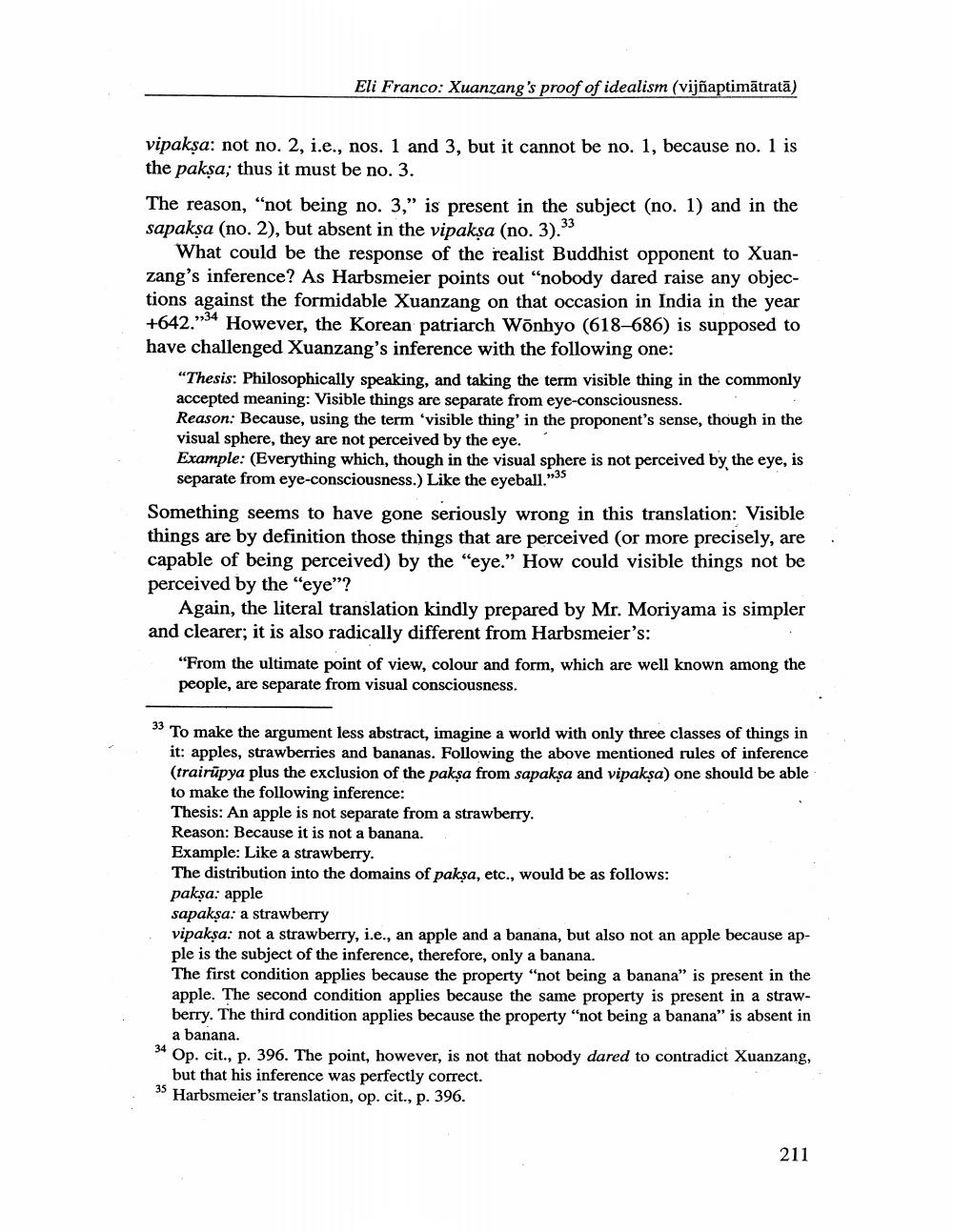________________
Eli Franco: Xuanzang's proof of idealism (vijñaptimātratā)
vipaksa: not no. 2, i.e., nos. 1 and 3, but it cannot be no. 1, because no. 1 is the pakşa; thus it must be no. 3. The reason, "not being no. 3," is present in the subject (no. 1) and in the sapaksa (no. 2), but absent in the vipaksa (no. 3)."
What could be the response of the realist Buddhist opponent to Xuanzang's inference? As Harbsmeier points out "nobody dared raise any objections against the formidable Xuanzang on that occasion in India in the year +642." However, the Korean patriarch Wönhyo (618-686) is supposed to have challenged Xuanzang's inference with the following one:
"Thesis: Philosophically speaking, and taking the term visible thing in the commonly accepted meaning: Visible things are separate from eye-consciousness. Reason: Because, using the term 'visible thing' in the proponent's sense, though in the visual sphere, they are not perceived by the eye. Example: (Everything which, though in the visual sphere is not perceived by the eye, is
separate from eye-consciousness.) Like the eyeball." Something seems to have gone seriously wrong in this translation: Visible things are by definition those things that are perceived (or more precisely, are capable of being perceived) by the "eye.” How could visible things not be perceived by the "eye"?
Again, the literal translation kindly prepared by Mr. Moriyama is simpler and clearer; it is also radically different from Harbsmeier's:
"From the ultimate point of view, colour and form, which are well known among the people, are separate from visual consciousness.
33 To make the argument less abstract, imagine a world with only three classes of things in
it: apples, strawberries and bananas. Following the above mentioned rules of inference (trairūpya plus the exclusion of the paksa from sapaksa and vipaksa) one should be able to make the following inference: Thesis: An apple is not separate from a strawberry. Reason: Because it is not a banana. Example: Like a strawberry. The distribution into the domains of paksa, etc., would be as follows: paksa: apple sapakşa: a strawberry vipaksa: not a strawberry, i.e., an apple and a banana, but also not an apple because apple is the subject of the inference, therefore, only a banana. The first condition applies because the property "not being a banana" is present in the apple. The second condition applies because the same property is present in a strawberry. The third condition applies because the property "not being a banana" is absent in
a banana. * Op. cit., p. 396. The point, however, is not that nobody dared to contradict Xuanzang,
but that his inference was perfectly correct. 35 Harbsmeier's translation, op. cit., p. 396.
211




